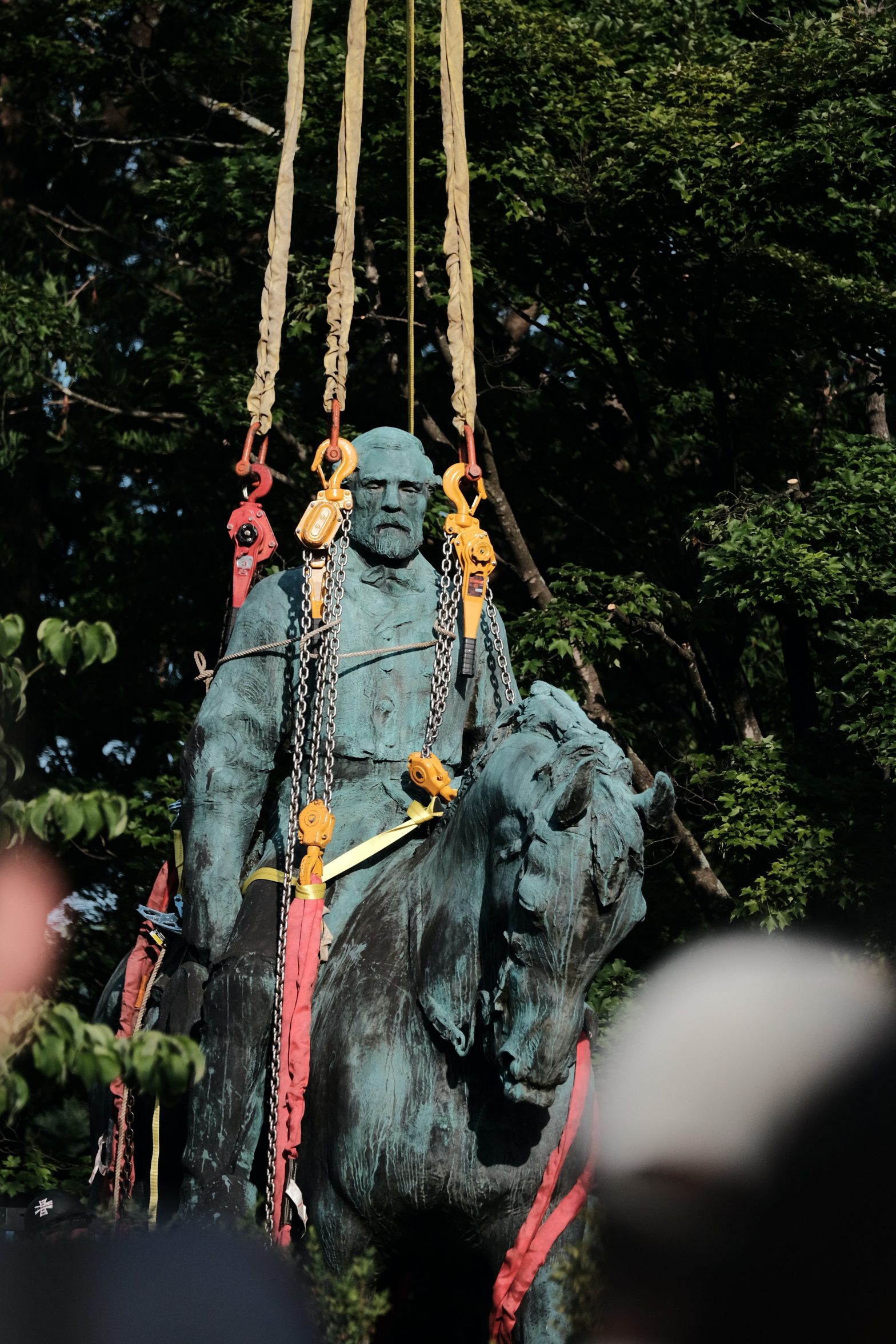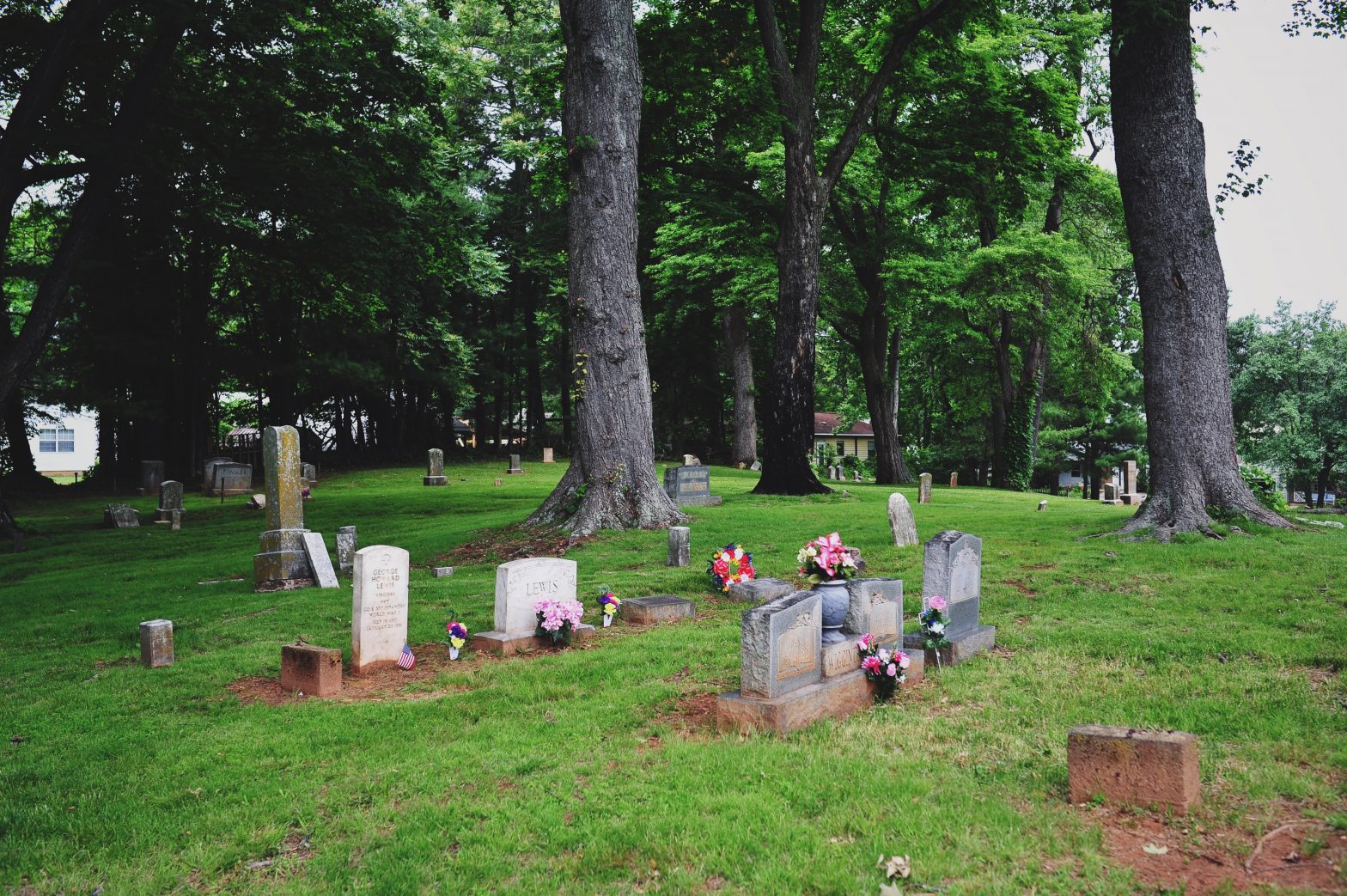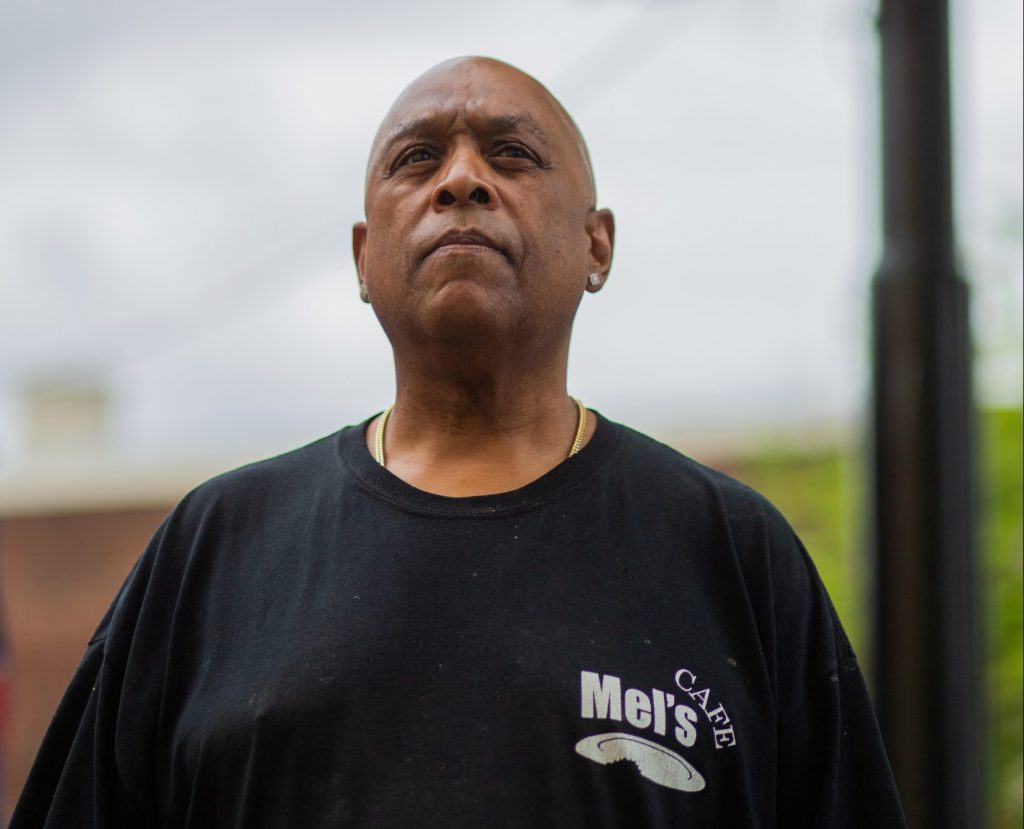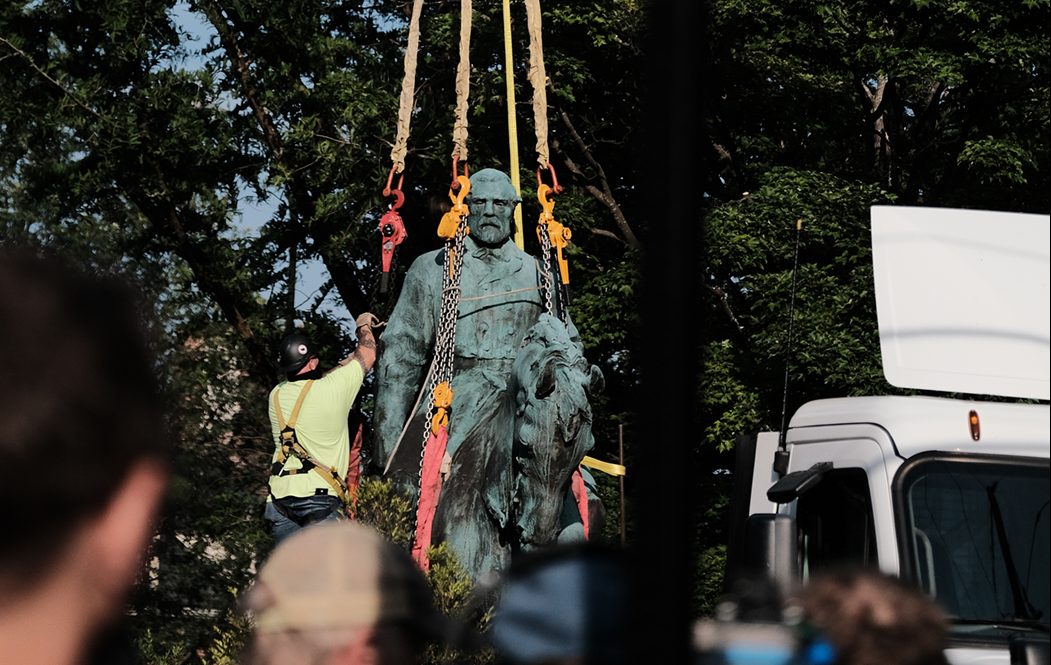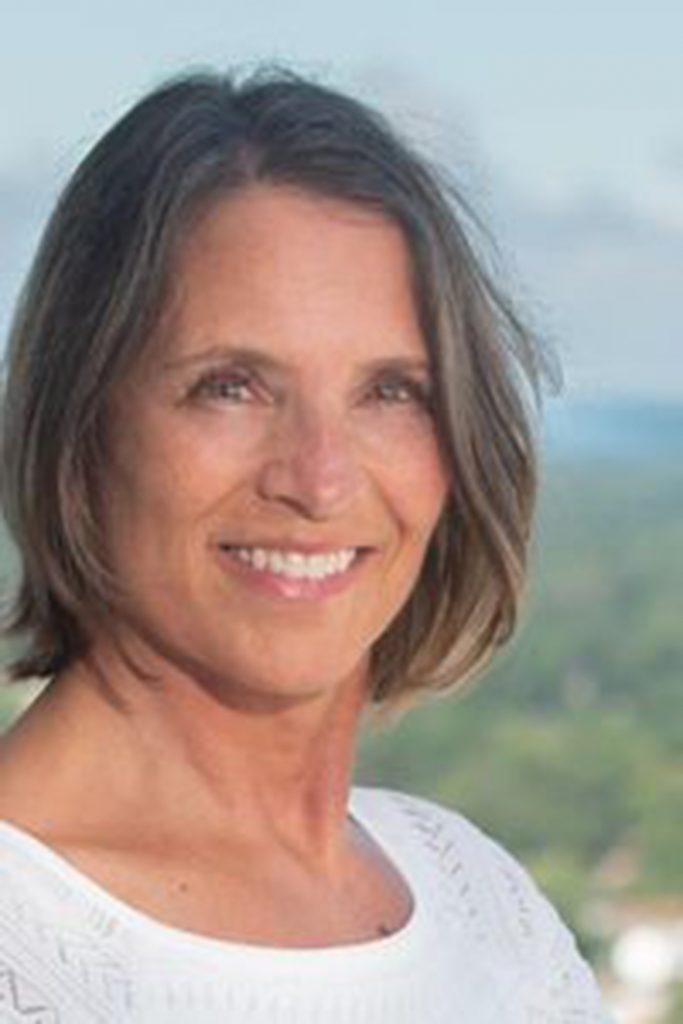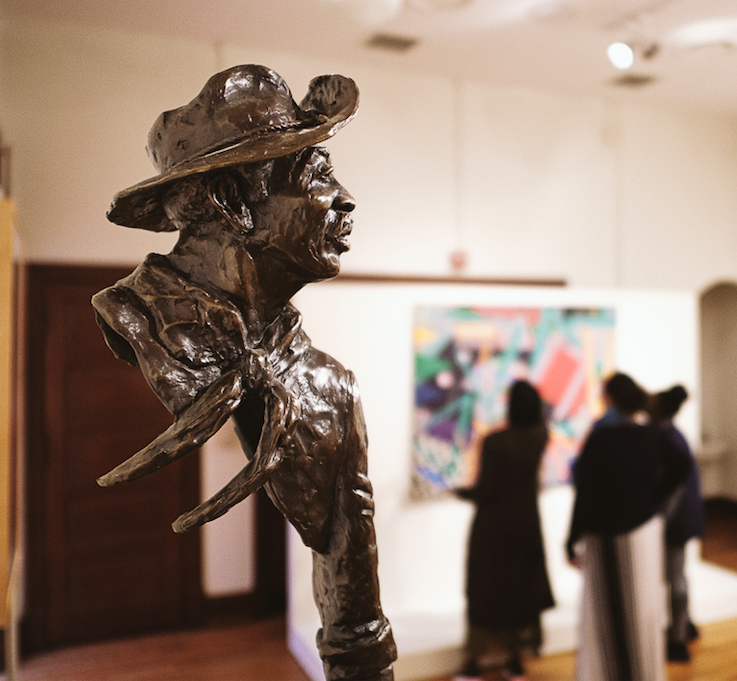By Sarah Sargent
Robert Reed’s “San Romano (Hip Strut)” explodes off the wall of the Jefferson School’s gallery. The bright colors and bold shapes are both abstract and representational—in one corner it’s all color and form, and in another corner there’s a chessboard, a gift from Reed’s son.
Reed attended the Jefferson School as a child in the age of segregation before finding success as an artist and academic. He taught at the Yale School of Art from 1969 until his death in 2014, but he maintained ties to the community throughout his life, keeping a studio here and sitting on the advisory board of Second Street Gallery. Now, his work is on display as part of the Jefferson School African American Heritage Center’s “Charlottesville Collects African American Art” exhibit.
“This exhibition shows what African American artists have been thinking about, and how they’ve been approaching their work, over the last 70 years,” says JSAAHC Executive Director Andrea Douglas. The show’s 18 works provide a surprisingly in-depth survey, revealing what Douglas calls “a dramatic shift in America post-civil rights movement, when Black artists, and Americans in general, began to exist in a more racialized space.”
Reed’s work shows the tension at the heart of that evolution, as Black artists struggled to find success in the world of abstract art. Though the art establishment in the late 20th century sought abstract work, it also sidelined Black modernists because of their race. Meanwhile, these artists were repudiated by members of their own community for their emphasis on aesthetics rather than narrative.
“At the heart of this exhibition is the discourse of aesthetics versus race,” says Douglas. “It began with Alain Locke and W.E.B. Du Bois in the 1920s, James Porter in the ’40s, and then, in terms of the visual arts, it came to a head in 1971, with a show entitled ‘Contemporary African American Art’ at the Whitney Museum in New York City, and a second show in Houston, Texas, called ‘The DeLuxe Show.’” The early ’70s saw Black artists “articulating what it is that they understand to be their role and place in the larger American conversation,” says Douglas.
The Whitney mounted “Contemporary African American Art” in response to calls for more representation in museums from a group of artists called the Black Emergency Cultural Coalition. But as the exhibit went up, two points of contention emerged. The BECC were upset that the show had been scheduled for the spring, rather than the more prestigious winter months. The coalition also felt The Whitney hadn’t consulted enough experts in Black art about the selection of works. The BECC called for a boycott of the show, and 15 of the 75 artists on display withdrew their work.
Meanwhile, down in Texas, “The DeLuxe Show” was formed and presented in a remodeled movie theater as the first fully integrated show of its kind. The exhibition featured exclusively aesthetically based abstract art. The artists, regardless of their race, were presented on equal footing.
Standing next to Reed’s work at the Jefferson School is a sculptural work by renowned abstract artist Sam Gilliam, one of the artists who was in “The DeLuxe Show,” and one of the 15 who withdrew from the Whitney following the BECC boycott.
In the Charlottesville exhibition, his “Concrete (Tall #7)” creeps up on you, revealing its power incrementally. Gilliam uses concrete as his surface, silk screening the ink onto the overlapping, wafer-thin planes. It’s an interesting pairing—the obdurate weightiness of the concrete contrasting to the color, which at the upper part of the work, appears almost vaporous. Down below, three-dimensional drips and ridges of pigment add additional materiality, and impart visual heft. Gilliam uses copper wire to stitch together the planes, the copper is dull, so it doesn’t scream at you, but the chain-like stitches are so beautifully done, it’s clear they transcend their function to become a player within the composition. Jazz inspires Gilliam, and there’s a musical quality to the rhythm of the work with its varied passages of quiet and clamor.
Placing Gilliam’s piece next to Reed’s was “a really important gesture,” says Douglas. The two were friends and their approach to color and strong geometric forms is similar.
Reed isn’t the only artist featured in the show who attended the Jefferson School. Brothers Henderson “Bo” Walker and Frank Walker, and their friend Gerry Mitchell, were students there too, making the exhibition a reunion of sorts.
Moving around the room, two lithographs by Richard Hunt also stand out. Hunt is a prolific sculptor with over 125 public commissions to his name. His affinity for working in three dimensions is obvious here in the assemblage of bone-like objects, some flat, some rendered with volume, producing a striking sculptural effect. The earthy browns and grays punctuated by a pop of yellow strikes just the right note of stylish restraint.
Alison Saar’s “Black Bottom Stomp” draws on West African art and imagery. The title references Jelly Roll Morton’s 1925 jazz composition of the same name, so there’s a back and forth going on between West Africa and America. Saar’s images—the female figure, the moon, and also the title and the colors—present clues that resonate with the viewer.
If you’ve been to the Times Square subway station, you might recognize Jacob Lawrence’s “Transit I and II.” The sketches are the silkscreen models for a mosaic mural commissioned by the New York City Transit Authority for the busy station. “Transit I” depicts a subway car with riders holding onto poles. In “Transit II,” the subject shifts to a bus crowded with riders.
Lawrence uses a reduced palette of handsome earth tones that resemble collaged pieces of paper. With his jerky, jangly shapes and figures, he conveys the movement of train and bus and the press of humanity within them. He also adds recognizable touches—a briefcase, a long strand of sausages links, rosary beads for a potential subway proselytizer—to point out the range of transit patrons. With their flattened space and flat blocks of color, the compositions come across as abstract/figurative hybrids.
“We could write a very good history of photography between a Gordon Parks, a Carrie Mae Weems, and a Hank Willis Thomas, in terms of developing a conceptual idea about what photography has the potential to speak about,” says Douglas, referring to three photographs in the show. “Gordon Parks was sent to Alabama right after the bus boycott with the intention of documenting life in the South for Black people. He went to one of the poorest areas, met a sharecropper, Willie Causey and his family, and then documented that family in a series that appeared in Time magazine. Parks was approaching it from an aesthetic position, but he was also interested in describing Black poverty in the midst of the civil rights movement as a way of creating empathy for these people.”
The Weems’ photograph is from her “Kitchen Table Series,” which consists of 20 images of Weems, her romantic partner, her child, and her mother positioned around her kitchen table. Below an ever-present and distinctive overhead light fixture, the people in the photographs are caught in the ordinary moments of a woman’s life. Dating to 1990, the “Kitchen Table Series” established Weems’ reputation. The series is remarkable because it focused on a Black family at a time when so much contemporary art exhibited in museums and galleries did not. And while the subject of the series is a Black woman, the images also possess a universality that transcends race and gender.
Hank Willis Thomas’ haunting color photograph, “Strange Fruit,” depicts a muscular Black man wearing shorts and Nike sneakers in midair, slam dunking a basketball through a noose. “Looking at the image, you can see Thomas is thinking about the role of commodity and Black bodies,” says Douglas. “Embedded within the image also is the history of violence against Black bodies, the ways in which sports has become a road out of poverty, the importance of Nike as a brand and, therefore, the branding of that body with the racist, capitalist discourse that that can engender. …All of those things are there.”
The University of Virginia Art Museum, where Douglas was once a curator, used to mount a recurring show, “Charlottesville Collects,” which focused on local collections. Those collections overwhelmingly belonged to white people and featured white artists. So it was important for Douglas to present a show that shifted the emphasis to Black artists. “Charlottesville Collects African American Art” reveals a wealth of that art in this community.

